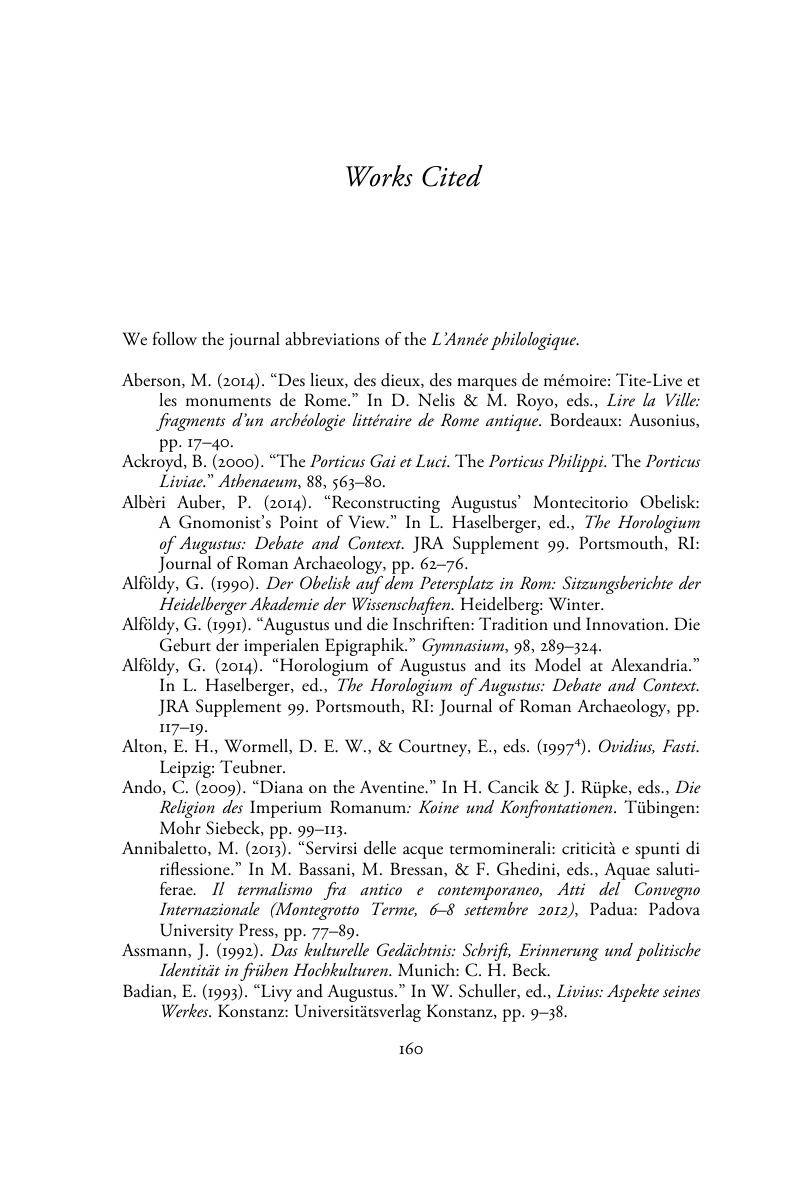Book contents
- The Cultural History of Augustan Rome
- The Cultural History of Augustan Rome
- Copyright page
- Dedication
- Contents
- Figures
- Contributors
- Acknowledgments
- Abbreviations
- Introduction
- Chapter 1 Monumental Insignificance
- Chapter 2 Cicero, quid in alieno saeculo tibi?
- Chapter 3 The Julian Calendar and the Solar Meridian of Augustus
- Chapter 4 Monument Men
- Chapter 5 The Porticus Liviae in Ovid’s Fasti (6.637–648)
- Chapter 6 Greek Poets on the Palatine
- Chapter 7 Ovid’s Two-Body Problem
- Works Cited
- Index
- References
Works Cited
Published online by Cambridge University Press: 29 May 2019
- The Cultural History of Augustan Rome
- The Cultural History of Augustan Rome
- Copyright page
- Dedication
- Contents
- Figures
- Contributors
- Acknowledgments
- Abbreviations
- Introduction
- Chapter 1 Monumental Insignificance
- Chapter 2 Cicero, quid in alieno saeculo tibi?
- Chapter 3 The Julian Calendar and the Solar Meridian of Augustus
- Chapter 4 Monument Men
- Chapter 5 The Porticus Liviae in Ovid’s Fasti (6.637–648)
- Chapter 6 Greek Poets on the Palatine
- Chapter 7 Ovid’s Two-Body Problem
- Works Cited
- Index
- References
Summary

- Type
- Chapter
- Information
- The Cultural History of Augustan RomeTexts, Monuments, and Topography, pp. 160 - 186Publisher: Cambridge University PressPrint publication year: 2019



